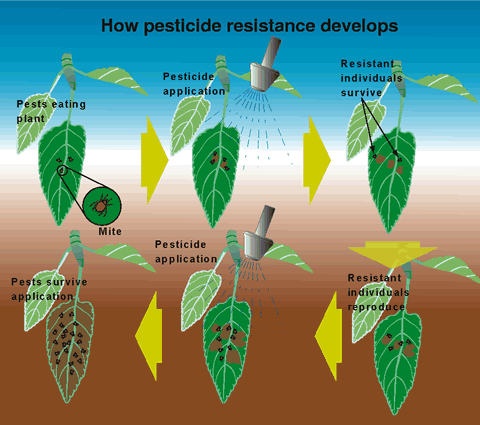An Unbiased View of Eco Bed Bug Exterminators Dc
An Unbiased View of Eco Bed Bug Exterminators Dc
Blog Article
Little Known Questions About Eco Bed Bug Exterminators Dc.
Table of ContentsThe 7-Minute Rule for Eco Bed Bug Exterminators DcThe Facts About Eco Bed Bug Exterminators Dc UncoveredA Biased View of Eco Bed Bug Exterminators DcExamine This Report about Eco Bed Bug Exterminators DcSome Known Incorrect Statements About Eco Bed Bug Exterminators Dc
Due to the fact that pesticides are toxic, they are additionally potentially hazardous to people, animals, other organisms, and the setting. For that reason, individuals who utilize chemicals or frequently come in contact with them must recognize the loved one toxicity, prospective health and wellness impacts, and preventative steps to lower exposure to the products they use. Hazard, or danger, of utilizing pesticides is the capacity for injury, or the degree of threat associated with making use of a pesticide under a given set of conditions.
Applicators can minimize or nearly eliminate exposure-- and thus decrease danger-- by adhering to the label directions, using individual safety apparel and devices (PPE), and managing the pesticide properly. Even more than 95 percent of all pesticide exposures come from facial exposure, primarily to the hands and lower arms. By using a set of unlined, chemical-resistant gloves, this sort of direct exposure can be almost eliminated.
The unsafe impacts that occur from a solitary direct exposure by any kind of course of access are termed "acute impacts." The 4 paths of exposure are facial (skin), inhalation (lungs), dental (mouth), and the eyes. Severe poisoning is figured out by taking a look at the dermal toxicity, inhalation toxicity, and dental poisoning of guinea pig.
About Eco Bed Bug Exterminators Dc
Acute poisoning is gauged as the amount or focus of a toxicant-- the a.i.-- called for to eliminate 50 percent of the pets in an examination population. This action is typically expressed as the LD50 (deadly dosage 50) or the LC50 (lethal focus 50). Furthermore, the LD50 and LC50 values are based on a single dosage and are recorded in milligrams of pesticide per kg of body weight (mg/kg) of the examination animal or partly per million (ppm).
The reduced the LD50 or LC50 value of a pesticide product, the better its toxicity to people and animals. Chemicals with a high LD50 are the least toxic to humans if used according to the directions on the item label. The chronic toxicity of a chemical is identified by subjecting test pets to lasting direct exposure to the energetic component.
The persistent poisoning of a chemical is harder than acute poisoning to figure out with research laboratory analysis. Products are classified on the basis of their loved one severe poisoning (their LD50 or LC50 values). Pesticides that are categorized as very hazardous (Toxicity Category I) on the basis of either dental, dermal, or inhalation toxicity should have the signal words DANGER and poisonous substance published in red with a skull and crossbones symbol plainly presented on the front panel of the package tag.
The intense (single dose) oral LD50 for pesticide products in this team ranges from a trace total up to 50 mg/kg. For instance, exposure of a few declines of a product taken by mouth might be deadly to a 150-pound person. Some chemical products have simply the signal word DANGER, which informs you nothing about the acute toxicity, just that the item can cause extreme eye damages or serious skin inflammation
Eco Bed Bug Exterminators Dc Can Be Fun For Everyone
In this category, the severe oral LD50 varieties from 50 to 500 mg/kg. A tsp to an ounce of this material can be deadly to a 150-pound person (bed bug exterminator). Pesticide items classified as either somewhat poisonous or fairly harmless (Poisoning Categories III and IV) are called for to have the signal word care on the pesticide tag

All chemical toxicity values, including the LD50, can be located on the item's Product Safety Information Sheet (MSDS) - bed bug heat treatment. Pesticide tags and MSDS can be gotten from sellers or produces. On top of that, the majority of items also have information that can be found online. The symptoms of chemical poisoning can vary from a moderate skin irritation to coma or even Your Domain Name fatality.
Because of potential health concerns, pesticide users and handlers should acknowledge the common indications and signs of pesticide poisoning. The impacts, or symptoms, of chemical poisoning can be generally specified as either topical or systemic.
3 Simple Techniques For Eco Bed Bug Exterminators Dc
Dermatitis, or inflammation of the skin, is accepted as the most frequently reported topical impact connected with pesticide direct exposure. Some people have a tendency to cough, hiss, or sneeze when revealed to pesticide sprays.
This signs and symptom typically subsides within a couple of minutes after an individual is eliminated from the direct exposure to the toxic irritant. Nevertheless, a reaction to a chemical item that causes somebody not only to sneeze and cough yet likewise to establish severe intense respiratory signs and symptoms is more probable to be a true hypersensitivity or sensitive reaction.
Systemic impacts are fairly different from topical results. They usually take place away from the initial point of get in touch with as an outcome of the pesticide being soaked up right into and distributed throughout the body. Systemic effects usually include queasiness, throwing up, tiredness, migraine, and digestive disorders. In innovative poisoning instances, the individual might experience changes in heart rate, trouble breathing, convulsions, and coma, which might cause death.
Report this page